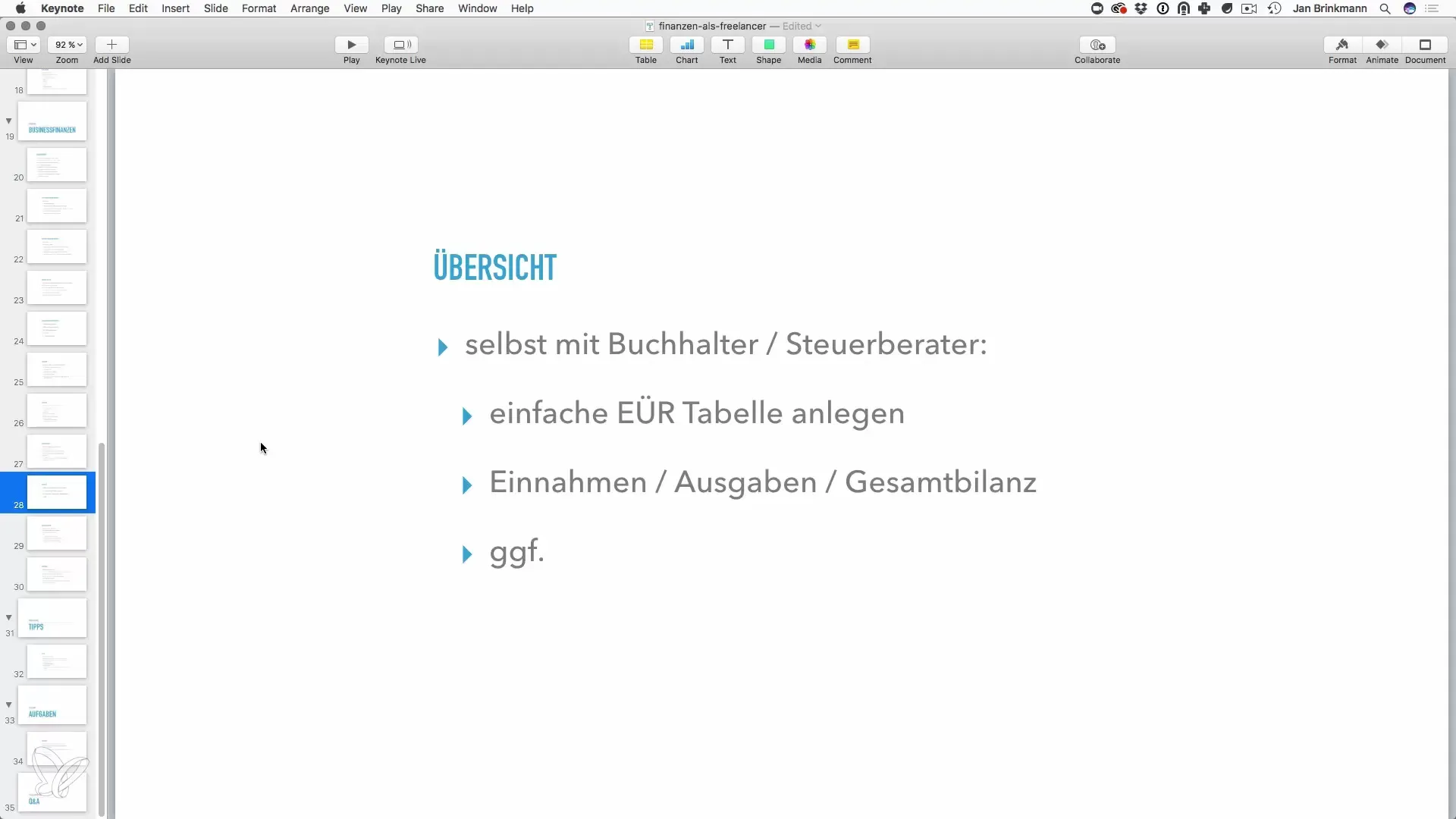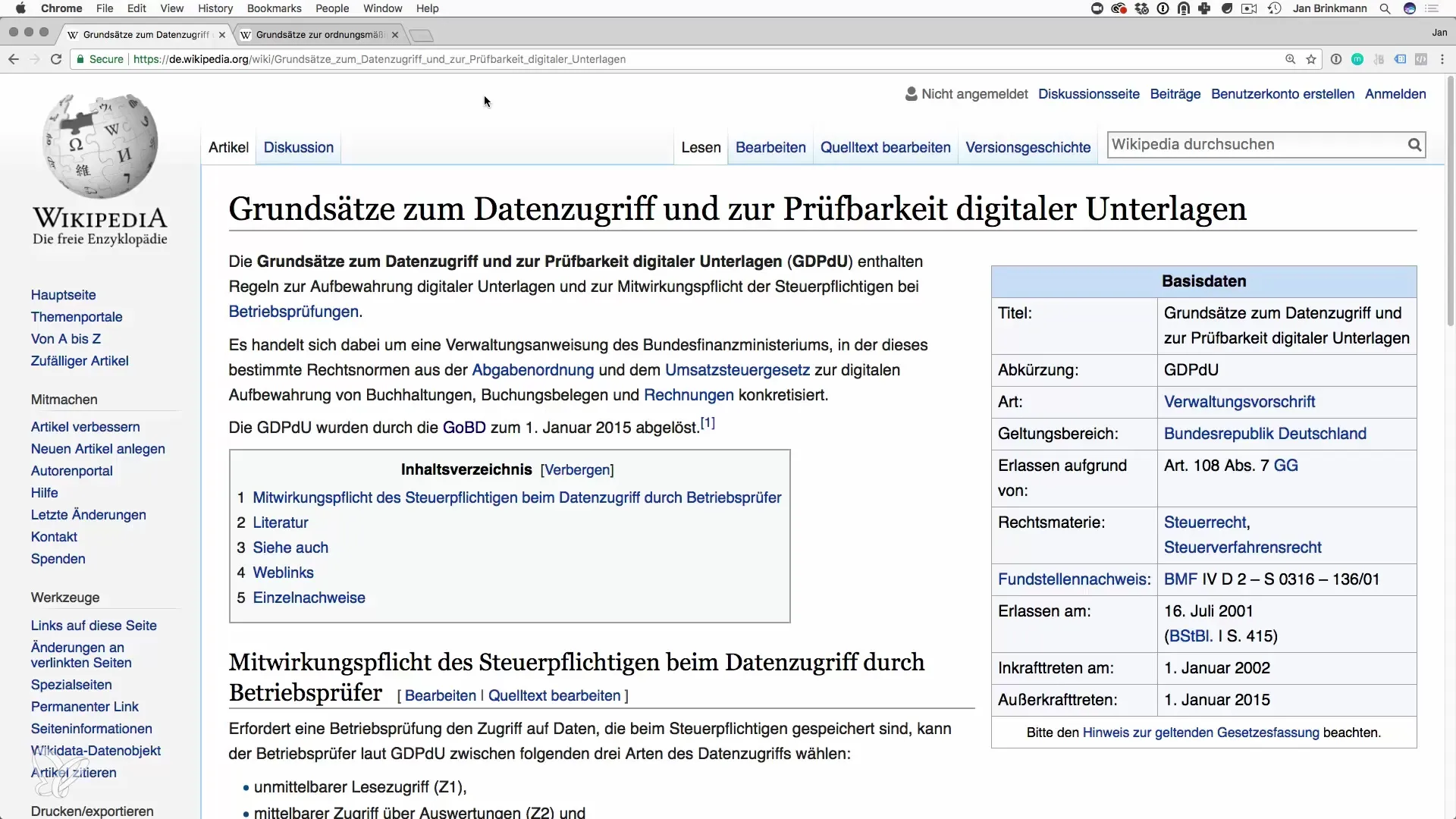When you are working as a freelancer, it is crucial to have a clear overview of your finances. It's not enough to simply complete your projects successfully; you must also ensure that your financial foundation is stable. In this guide, you will learn how to manage your payments and expenses efficiently to ensure a steady flow of income and avoid unpleasant surprises.
Main insights
- Always keep an overview of your income and expenses.
- Consider whether working with a tax advisor makes sense for you.
- Keep your accounting records carefully organized and up to date.
- Be mindful of tax deadlines and advance payments to avoid financial bottlenecks.
- Inform yourself about relevant tax regulations (such as the small business regulation) and plan accordingly.
Step-by-step guide to financial management
Step 1: Create an income statement
Start by preparing an income statement. You will need a table where you record your income on one side and your expenses on the other. The difference between these two statements will tell you about your profit. This measure is fundamental for a transparent overview of your financial situation.

Step 2: Consider hiring a tax advisor
If you do not feel comfortable managing your accounting records yourself, it is advisable to hire a tax advisor. These professionals can help you develop the best strategies to keep your finances in check while also gaining time for your actual projects.
Step 3: Organize receipts and documents
To maintain an overview of your finances, it is important that you file all receipts properly. Print out all necessary documents and archive them systematically. This way, you will be able to quickly access your tax advisor or process new invoices without delay when needed.
Step 4: Digital storage and legal aspects
Familiarize yourself with the legal requirements for the digital storage of your documents. The auditability of your documents plays a central role here. Check the legal framework and ensure that you keep all relevant information. This may also include receipts received via email.

Step 5: Regularly file and sort
One of the most common mistakes is delaying the filing of documents. Schedule regular intervals in which you file your receipts. Whether once a week or twice a month – set aside fixed times to complete this task. This way, you can avoid sinking into a bureaucratic mountain of documents.
Step 6: Keep invoices in view
For email invoices for services, such as from Amazon purchases, it is important to pay close attention. You should ensure that you receive all necessary invoices and store them in a secure location. A lack of invoices may mean that you can't claim everything on your tax return.
Step 7: Plan for tax payments
Keep an eye on tax payments. If the tax office requires a back payment, advance payments for the current year often need to be adjusted. It is important to pay attention to avoidable costs to prevent an unpleasant surprise.
Step 8: Obtain information on sales and trade tax
If you are operating as a small business, be sure to consider the tax limits. If you exceed the sales threshold of 17,500 euros, you are subject to sales tax and must submit a sales tax return. Sales over 20,000 euros incur trade tax. Consult a tax advisor for all relevant questions.
Step 9: Keep tax deadlines in mind
Be aware of the deadlines for submitting your tax return. These are usually to be met by the end of May. If you have a tax advisor, the deadline may be extended, but you should not take too much time.
Step 10: Avoid financial bottlenecks
Be prepared to respond quickly to financial bottlenecks that may arise due to back payments or advance payments. Plan your finances so that you always have a buffer to cover unexpected expenses.
Summary – Succeed as a freelancer: Keep your finances in check
Managing your finances as a freelancer requires discipline and a structured approach. By regularly recording income and expenses, understanding legal requirements, and having the necessary knowledge about tax payments, you can help minimize your financial stress.
Frequently Asked Questions
How do I create an income statement?Create a table with income on one side and expenses on the other.
When is the tax return due?Generally by the end of May of the following year, can be extended with a tax advisor.
What is the small business regulation?A regulation for businesses with an annual turnover below 17,500 euros, which are exempt from sales tax.
How do I handle digital receipts?Ensure they are archived digitally, and comply with legal requirements.
What to do if I receive a back payment?Have buffers ready and plan for advance payments to avoid financial bottlenecks.


